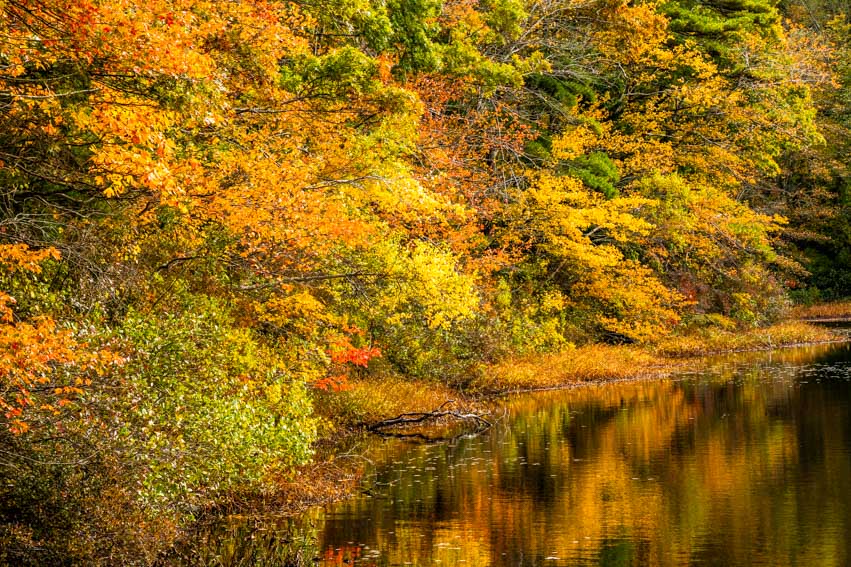As autumn arrives we begin to see the changes in color in the landscape. The first to give us a sign is usually the Red Maple, which after a few cold nights will transform its leaves to a fiery red. The Tupelo is soon to follow with species like Ash, Beech and Hickory not far behind. It is a magical process that we often appreciate the aesthetic component while forgetting the science behind the change.
Our knowledge about the how and why of the color is vast. Deciduous trees remain green during the year due to their production of chlorophyll, which is essential for producing the sugars the tree requires. As sunlight wanes to less than 12 hours a day chlorophyll production decreases causing the green color of leaves to fade. Yellow and orange pigments are present in many leaves throughout the year but are masked by the green chlorophyll during warmer months. As the chlorophyll fades in fall it reveals the yellow and orange pigments that remain. The red coloration in leaves is caused by a chemical change that occurs when sugars get trapped in the leaves and are converted into anthocyanins.
While we do know the basic biological functions that cause changes in leaf color there always remains some “mystery” around the factors that influence the beginning of change, intensity of color and length at which the leaves remain before falling to the ground. Factors such as sunlight duration, temperature and moisture all play a key role, but how they all collectively influence the process remains for further study. It ultimately makes each fall a new and exciting display of Mother Nature’s beauty. Get outside, look around and enjoy!





